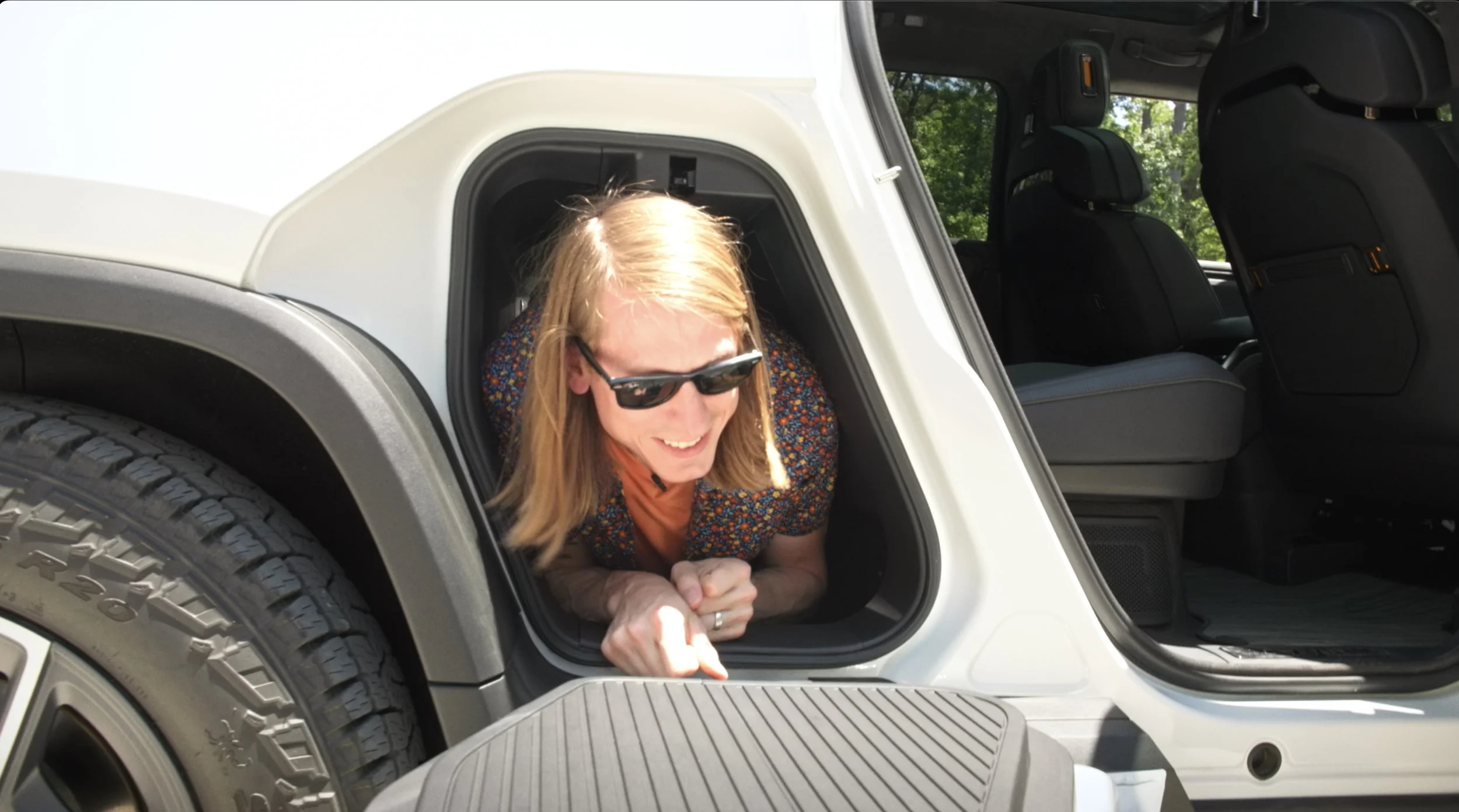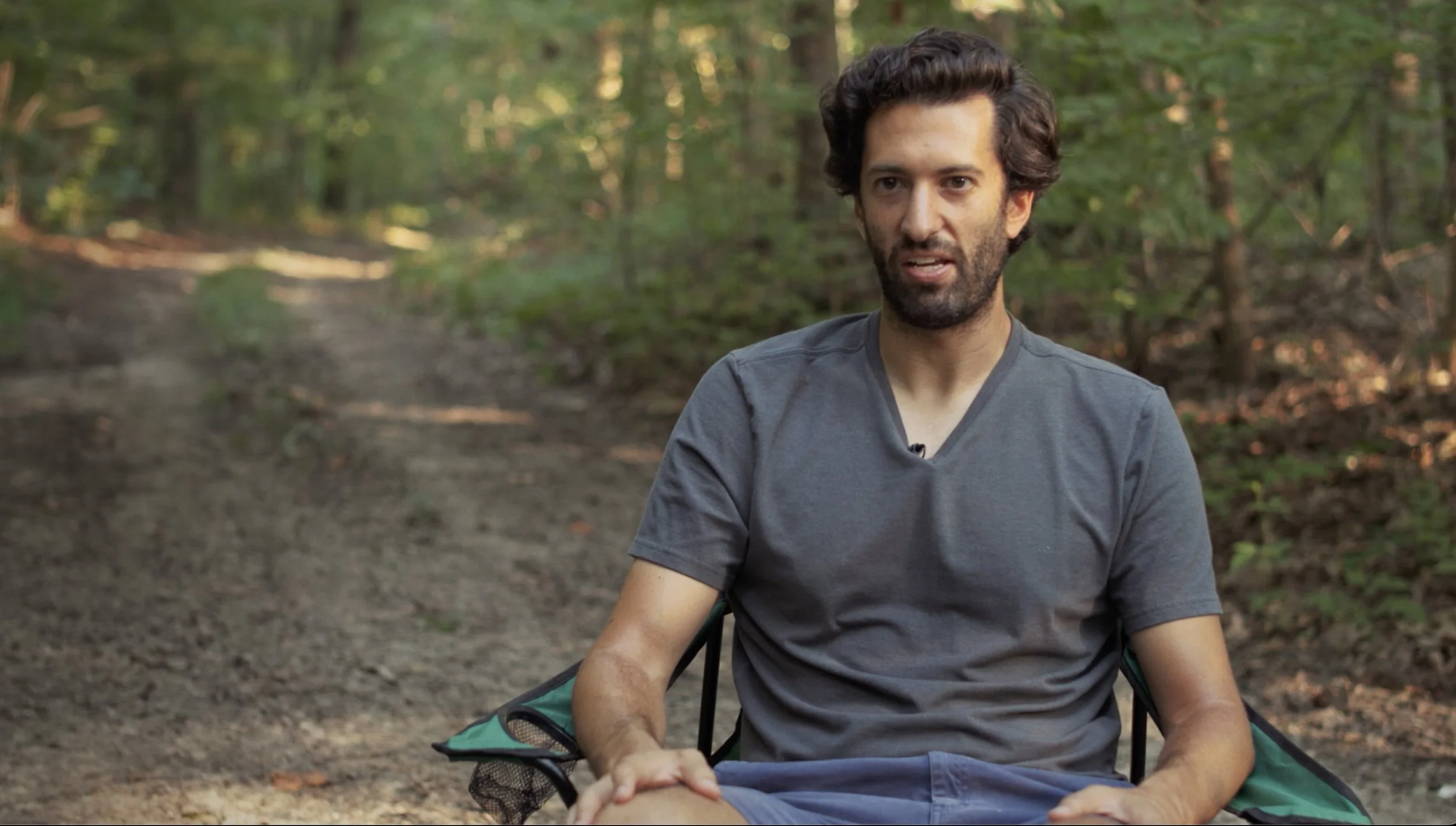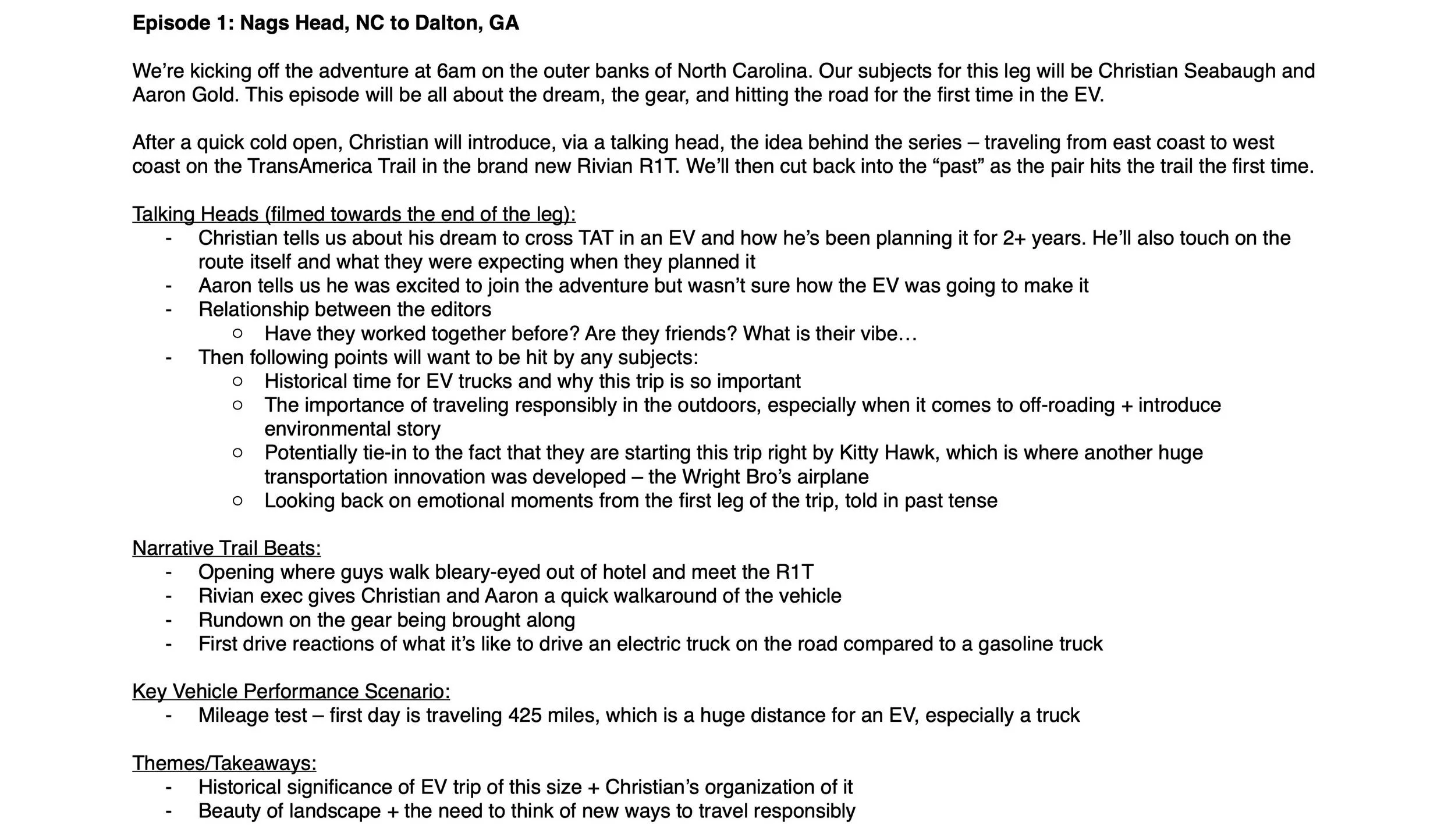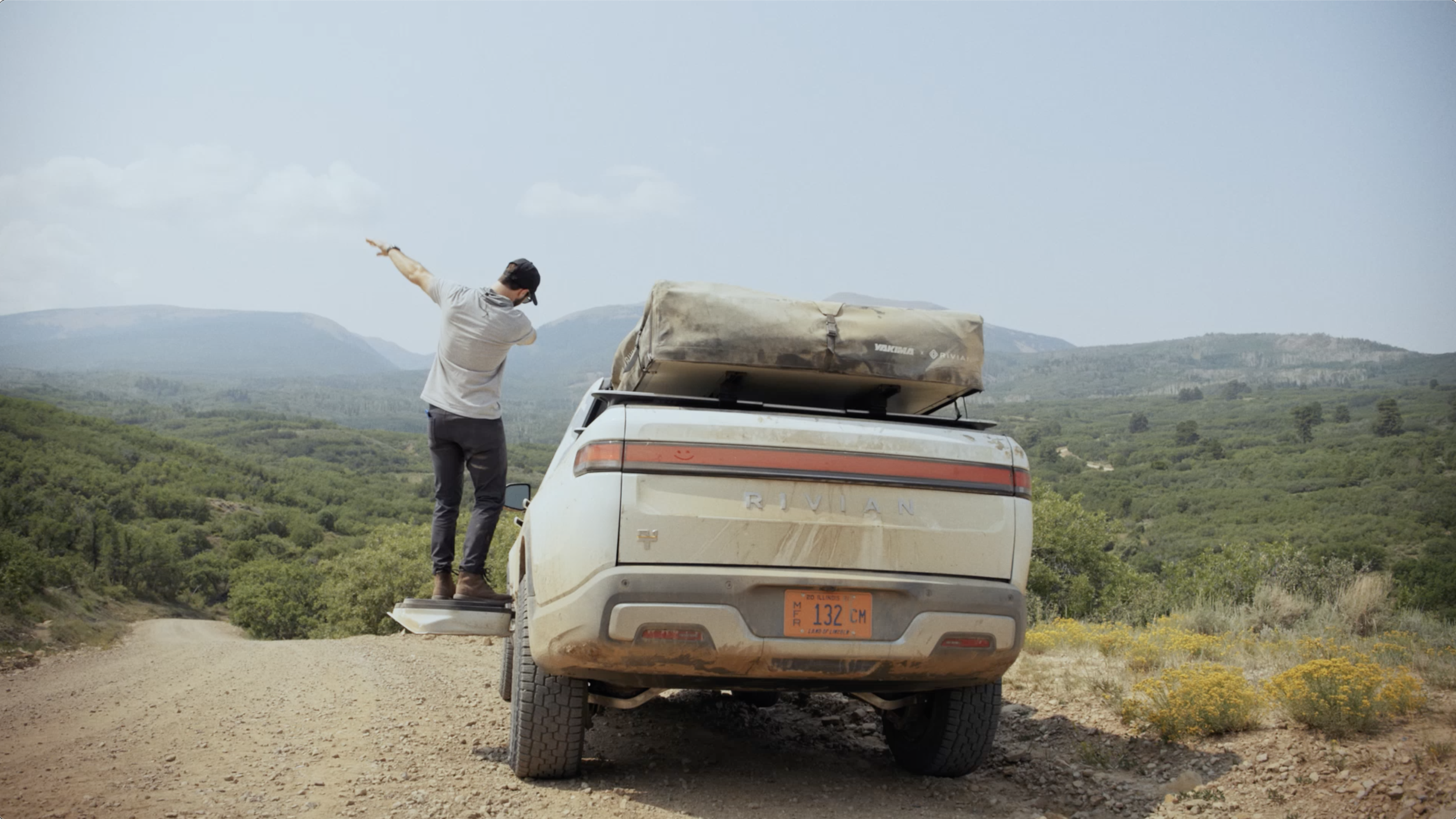Rivian: Electrifying the Outdoors
A Limited Footprint, High Output Production
Client: Rivian
Role: Creative Director
Format: Mid-Form Digital Series
-
![]()
The Context
Back in early 2021, Rivian was on the precipice of becoming the next great automotive brand. They had a great product – the fully-electric R1T pickup truck – but consumers were still wary of both the brand and the capabilities of its flagship product.
So with the journalists at MotorTrend, they developed a crazy idea: drive the truck across the entire country, completely off-road and make a documentary series about it.
Fast forward a few months, and after another creative left the project, I was placed at the helm... with only 3 days until the production crew left for the first of 5 planned legs. Suffice to say, I dropped everything and dove right in.
-
![]()
The Challenge
The journey would take place along the Trans America Trail, or TAT, — a path of interconnected, non-paved roads that runs from the Atlantic Ocean in North Carolina all the way to the Pacific Ocean in Oregon, seen in the map we created above. Gasoline cars have trouble with this route, let alone an EV.
Beyond the difficulties of the physical terrain and charging, we had to figure out how to film a 43 day trip, with 5 different sets of MotorTrend Editors and Rivian techs, with only 1 camera op that swapped out on each of the 5 legs.
All of this to accomplish Rivian’s goal: Showcase the capability of the R1T and how it will help preserve the natural wonder of our world.
-
![]()
The Inspiration
I love outdoor adventure docs, so that was my inspiration for the visual style and narrative drive of our documentary. Movies like The Dawn Wall and Meru, both mountaineering docs, or a series like Long Way Up, became touchstones.
Because what drew me to stories like these was the fact that they weren’t really about the physical act scaling massive cliffs, contesting avalanches and icefalls, or traveling tens of thousands of miles in unknown lands. They were about people who dared to do the impossible and why they dared to do them at all.
In other words, they all had an architect that grounded the narrative. So I set out to find ours.
-
![]()
The Process Pt 1
Finding the architect. Christian Seabaugh, Editor at MotorTrend, had been trying to convince his bosses and the execs at Rivian to run the TAT ever since he first laid eyes on the R1T years ago. Now his dream was finally coming to fruition, the tricky part for us? Christian would only be on Legs 1 and 5 of the trip.
Thus his story became the backbone of the narrative, and Editors on subsequent legs would introduce themselves to us through their relationships with Christian, allowing us to continue Christian’s central story even when he wasn’t on camera (or even in the same state!).
-
![]()
The Process Pt 2
Shifting audience expectations. We needed audiences to ask how not if the R1T made it to the end of each leg so the focus would remain on the reliability and future use of EV technology.
To do so, we told the story through the people that were there — the Editors from MotorTrend and the techs from Rivian – via sit down interviews from on the trail itself, which our directors captured at the end of their portion of each leg. However, our limited access to the talent created a new challenge: how do we capture moments that happen when our directors aren’t on the trail?
-
![]()
The Process Pt 3
Going retro. We needed to know what happened each day of the trip, regardless of if there was a director there or not, so we could craft the story in post production. So we gave the Editors their own camcorders, which we affectionately called the "dad cams".
Thinking back to the visuals and narrative style of Meru, I instructed the (begrudging yet willing) Editors on Leg 1 to turn the camera back on themselves each night and provide us with a video diary entry.
What we received back was gold, as it showed us a side of the characters we wouldn’t normally see, and these entries from each leg became the emotional core of the entire series.
-
![]()
The Process Pt 4
Developing the narrative. We used a loose three act structure for the episodes so they could stand on their own yet feel part of the series as a whole. The above image, taken from my original director’s treatment, outlines the main story beats of Episode 1.
Note that each episode had a unique set of trail beats, a vehicle performance scenario, and an overall theme that worked together to tell a complete story without necessarily needing context from previous episodes.
-
![]()
The Process Pt 5
Planning the interviews. I developed talking points and interview questions for the directors to use to get key information from the Editors and Rivian techs while on the trail. I included these items, along with summaries of previous legs and cheat sheets for the outgoing leg, in a production packet that I handed off to the team prior to their departure.
The above page, from the Leg 5 packet, showcases some of the questions posed to the subjects from the final leg of the adventure.
-
![]()
The Process Pt 6
Building the design language. We wanted our graphics package to accomplish two goals: 1) encapsulate the theme of the journey in a single image, and 2) help visually track where the team was at any given point on the adventure.
To hit goal 1, we drew inspiration from the R1T’s headlights and built an electricity-styled title animation, complete with a soft glow and buzzing background sound (still image above). For goal 2, we took that same look and applied it to our map (seen previously on "The Challenge" slide), which also designated the start and end points of each leg. Smooth, minimal, and easy to understand .
-
![]()
The Results
Rivian loved the final product, as did the Academy of Interactive & Visual Arts, which awarded the series a Gold Davey Award for Branded Series, Documentary.
From (5) 12-minute episodes, along with (6) 3-minute editorial bonus pieces, (1) :60 second social teaser, and (1) 2-minute series trailer, the campaign garnered:
• 22,468,215 Total Program Impressions
• 12,393,714 Total Social Impressions
• 1,364,710 Total Video Views
• 308,309 Social Engagements









